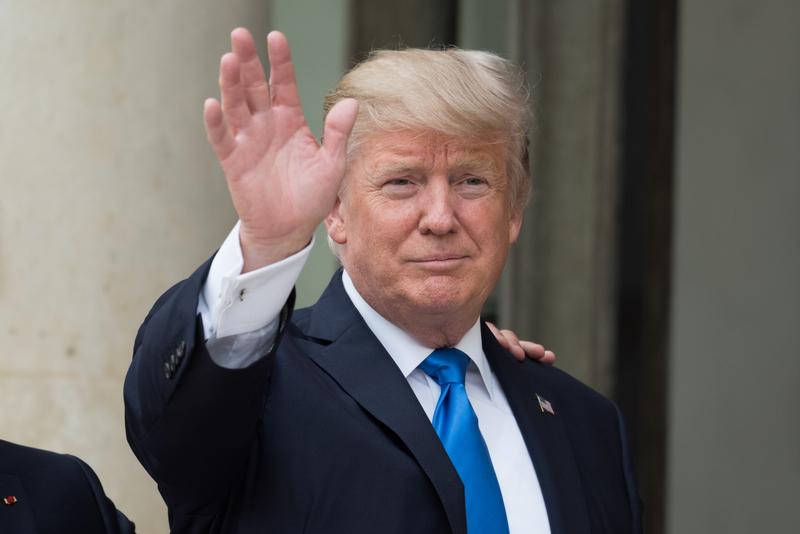Following the attempted assassination of former President Donald Trump on June 14, 2024 at a campaign rally in Butler, Pennsylvania, the internet was awash with various claims. The incident, a reflection of the United States’ polarized political climate, underscored the power of social media as a key source of both accurate and inaccurate information.
Trump-related mentions on social media spiked to 17 times the average daily frequency in the hours post-shooting, as per data from the cyber firm PeakMetrics. Alongside messages of sympathy and unity, there were numerous unfounded and fantastical assertions.
Countless dubious claims emerged almost immediately, with some pointing fingers at Trump himself or President Joe Biden for the attack. Speculation ranged from left-leaning individuals suggesting a false flag operation by Trump’s campaign, to Trump supporters accusing the Secret Service of intentionally failing to protect Trump on the White House’s command.
Paul Bartel, a senior intelligence analyst at PeakMetrics, noted an abundance of speculation and baseless claims about the incident. He observed that several groups, including the Chinese, Antifa, the Biden administration, and the RNC, were being blamed without any proof. Bartel emphasized that, due to a lack of solid information, people were turning to the internet to find answers and develop theories, showing the prevalence of unfounded speculation in uncertain times.
The viral video of the incident quickly accumulated millions of views. Almost instantly, “staged” became the second most trending topic after “Trump,” with over 228,000 posts using the term. Within an hour, many posts on X claimed the shooting was staged, garnering millions of views. There is no evidence to support these claims. Trump was visibly wounded, one spectator was killed, and another was injured.
The Secret Service addressed the rumors circulating on social media on Sunday. “There’s an untrue assertion that a member of the former President’s team requested additional security resources & that those were rebuffed. This is absolutely false. In fact, we added protective resources & technology & capabilities as part of the increased campaign travel tempo” stated agency spokesman Anthony Guglielmi on X.
Quickly, videos of the shooting were analyzed within partisan online circles, with both Trump supporters and opponents looking for evidence to back their beliefs. Some proposed that Secret Service agents ushering audience members away from Trump before the shooting suggested an inside job. Meanwhile, images of Trump’s raised fist were interpreted as evidence of staging.
Social media bots significantly contributed to the propagation of these false claims. Furthermore, a widely circulated AI-created image depicted a smiling Trump moments after the shooting.
Users on X, Telegram, and other niche online platforms claimed that the misidentification originated from the Butler Police Department. They shared a photo of a man wearing sunglasses and a black hat, claiming it was a screenshot from a YouTube video posted before the attack, where the man allegedly declared “justice was coming.” All of these claims were baseless.
Online conspiracy theories quickly proliferated, incorrectly identifying the suspected shooter and blaming others without evidence. Some of these theories even included antisemitic hate speech.
Before authorities identified the suspect, photos of two different individuals were widely shared online, incorrectly identifying them as the shooter. Amidst all the speculation, some attempted to monetize the event. On X, an account called Proud Patriots encouraged Trump supporters to buy assassination-attempt-themed merchandise. “First they jail him, now they try to end him,” read the ad for a commemorative Trump Assassination Attempt Trading Card. “Stand Strong & Show Your Support!”
Notorious conspiracy theorist Alex Jones live-streamed to an audience of hundreds of thousands on X after the incident. In a series of posts that were viewed millions of times on Saturday, Jones accused “the deep state.”
X accounts with hundreds of thousands of followers, known for disseminating QAnon conspiracy theories, attracted millions of views by accusing high-profile Democrats and Republicans of “possibly colluding” with the CIA to arrange the incident. There is no evidence to back any part of this assertion.
Some Republicans blamed Biden after the shooting, arguing that sustained criticisms of Trump have fostered a toxic atmosphere. They specifically referred to a comment Biden made to donors on July 8, stating “it’s time to put Trump in the bullseye.”
Trump’s provocative language has previously been blamed for inciting violence. His claims about the 2020 election and his call for supporters to “fight like hell” led to the January 6, 2021 attack on the Capitol, which resulted in his second impeachment on charges of incitement of insurrection. Trump also ridiculed the hammer attack that left 80-year-old Paul Pelosi, the husband of the former House speaker, with a fractured skull.
Though polls suggest that most Americans strongly oppose violence as a means of resolving political disputes, inflammatory rhetoric from candidates and social media can influence a small minority to act violently.
The aftermath of the assassination attempt on former President Donald Trump exemplifies the complicated and explosive nature of political discourse in the United States. As misinformation continues to spread, the importance of critically analyzing and verifying information grows more critical.


